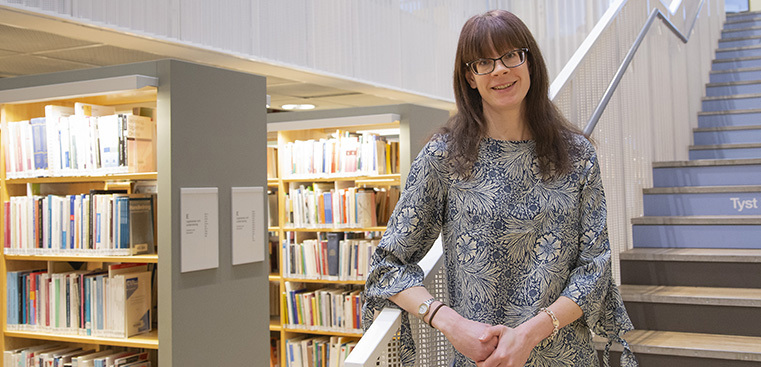How students' professional identity is shaped
2020-01-23
Profession-focused elements have been discussed for a long time in the education system. The problem lies in how higher education often makes the practical knowledge theoretical and that students find it difficult to use it.
"Students often experience a gap between their education and the workplace, which presents a number of challenges," says Sara Ahlryd, who recently defended her doctoral thesis in Library and Information Science at the University of Borås.
The concept of information practices means repeated patterns of action for seeking, using, and managing information in a social context.
"I wanted to see how students' information practices changed and developed over the course of the educational programme and as students were confronted with professional life through various professional activities, such as learning in a work environment, internships, guest lectures, study visits, or mentoring activities,” she says.
Information practices are also shaped by the context and a number of standards and procedures. In an internship, for example, participants and human activities are important ingredients.
"Another thing I wanted to study was how students' information activities change when they are confronted with working life during professional activities, and how that contributes to a recreation of the relationship between education and working life.”
Sara Ahlryd conducted about 30 interviews with students studying in undergraduate programmes: sports science, marketing, human resources, social work, and psychology. All of these educational programmes have elements of profession-oriented exposure to varying degrees.
"I have seen that students undergo a few different phases as they carry out different profession-oriented elements. At the beginning of the programme, there is a lot of focus on academic practices and the information activities linked to them,” she explains.
There may be a focus on seeking scientific information in databases or how to evaluate sources of information. This phase also includes discussing with other students about, for example, course tasks and asking questions to their teachers.
"Next, they come out and confront professional practice, and students begin to adapt their information activities to how the professionals behave. They are socialised into those communities in the workplace. Students also talk to professionals and observe how they perform their work, such as how they respond to users in difficult situations, or how employees talk about their customers at a customer meeting.”
Closely linked to socialisation in the workplace is a start to the creation of their own professional identity. This can be done in different ways, including legitimisation of students' knowledge by professionals and their demarcation of themselves in relation to other professions.
"What you can see is that information practices are closely related to learning. I have also seen examples of students bringing knowledge from profession-oriented activities back into their academic practices and that they can bring together these different forms of knowledge into a whole. It also helps shape their information activities,” she says.
She explains that she has seen that information practices are created and recreated, changing and evolving, when students meet the social community in the workplace during professional activities.
"The transition from education to professional life takes place over time and not at a single point. It is possible to see the transition as an ongoing process of change over time,” explains Sara Ahlryd.
Read more
Text: Anna Kjellsson
Portrait: Johannes Rydström, Linnéuniversitetet
Photo: Elisabeth Westlund



